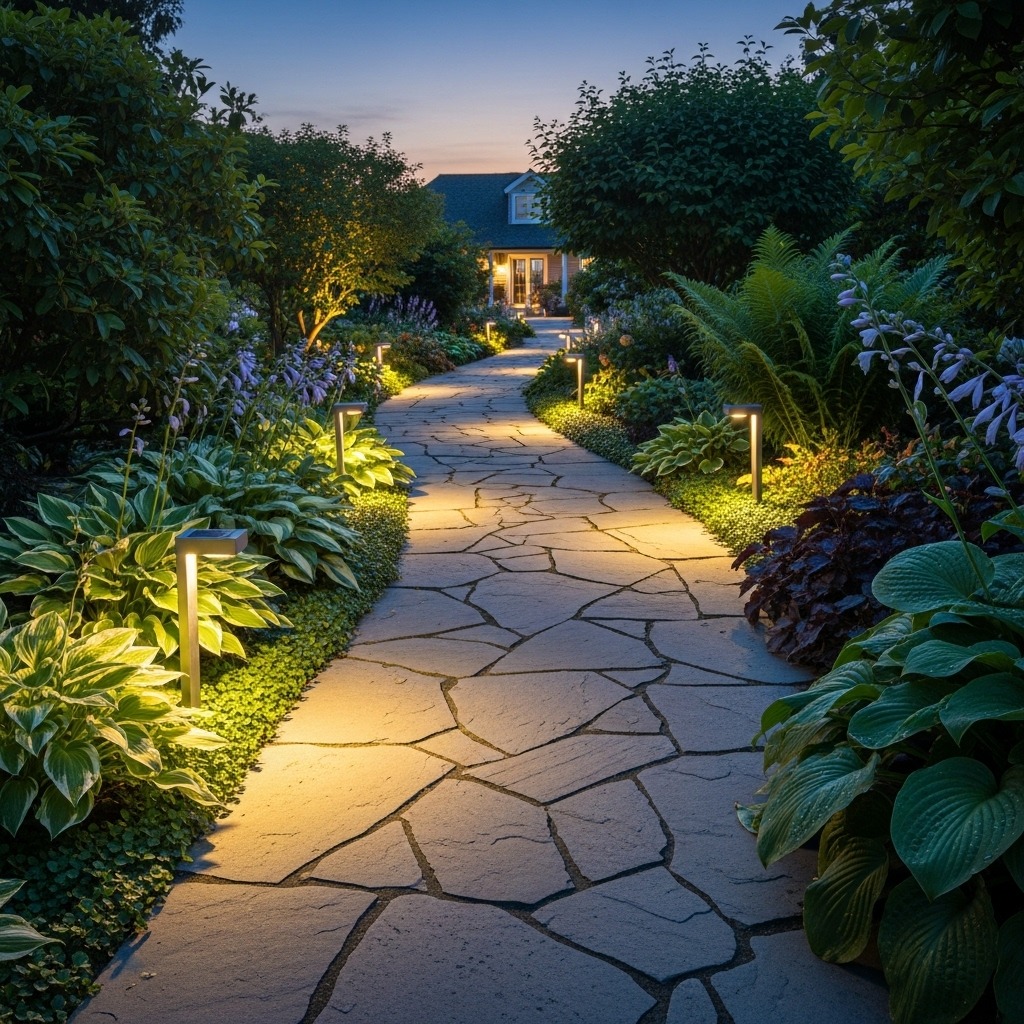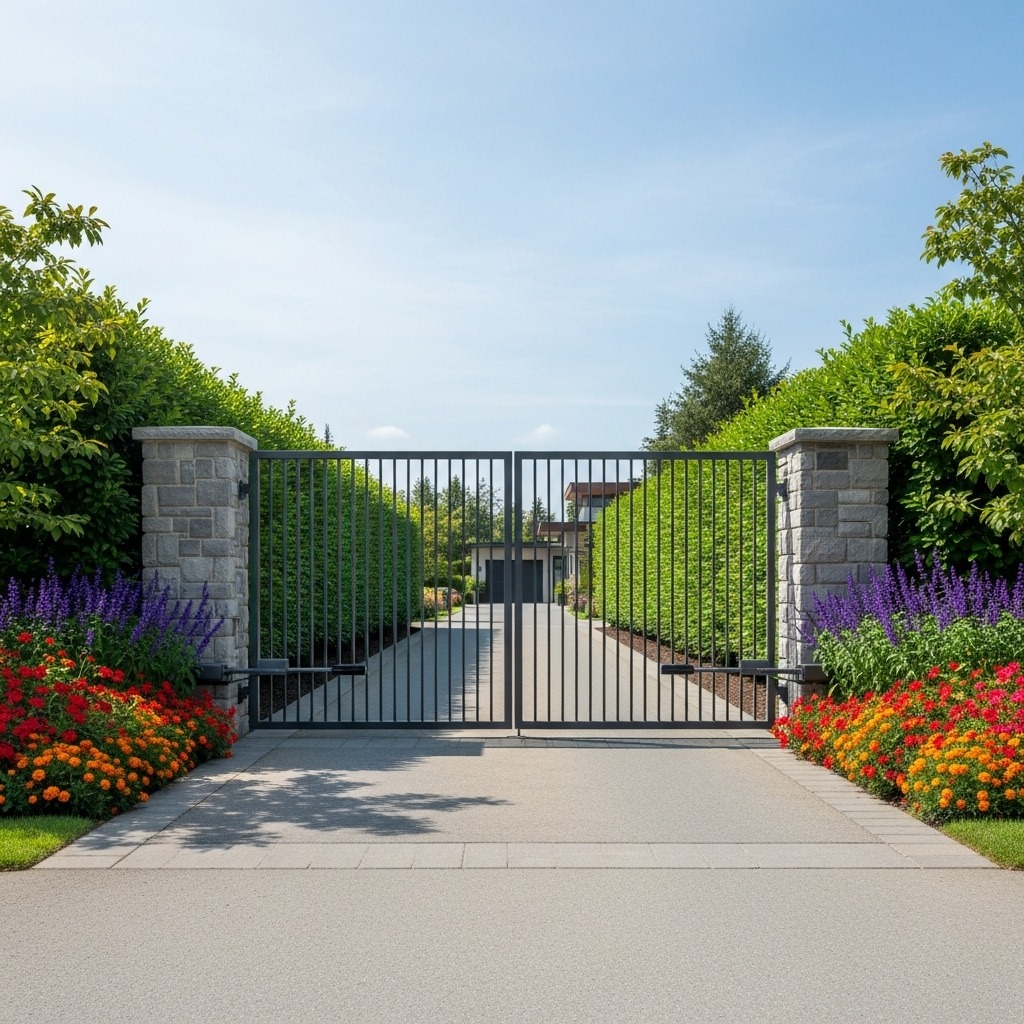Designing the perfect vegetable garden layout can feel overwhelming, but with the right ideas, you can turn any backyard—or even a small space—into a productive and beautiful food source.
Whether you’re planting tomatoes, lettuce, or herbs, the way you arrange your garden matters for growth, maintenance, and harvest.
Below, I’ll walk you through creative garden layout ideas for vegetables that suit different spaces and lifestyles.
1. Traditional Row Garden Layout

The classic row garden is the most recognizable setup for growing vegetables.
Plants are arranged in long, straight lines with space between each row for walking or using a wheelbarrow.
-
Best for: Larger backyards and gardeners who want simplicity.
-
Pros: Easy to weed, water, and harvest. Great for planting corn, beans, and squash.
-
How to do it: Till the soil into straight rows, leaving at least 18–24 inches of space between each for access. Use twine and stakes to keep your rows neat.
💡 Tip: Add mulch between rows to cut down on weeds and retain moisture.
2. Raised Bed Garden Layout
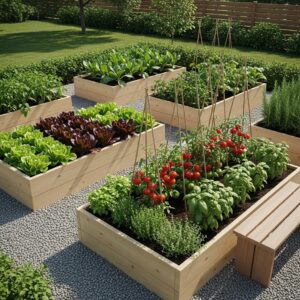
Raised beds are framed garden boxes filled with soil. They allow better control over soil quality and make gardening easier on your back and knees.
-
Best for: Small to medium spaces, beginners, and areas with poor soil.
-
Pros: Better drainage, extended growing season, and easier pest management.
-
How to do it: Build boxes with wood, bricks, or stone. Keep them about 3–4 feet wide (so you can reach across easily) and plant vegetables closer together for higher yields.
💡 Tip: Arrange raised beds in a grid pattern with paths in between for easy access.
3. Square Foot Gardening
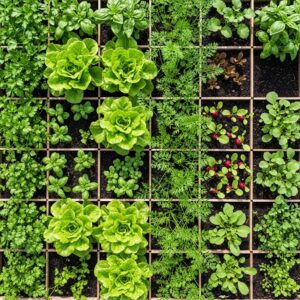
Square foot gardening is all about maximizing production in small spaces by dividing garden beds into square sections.
Each square hosts a different vegetable or herb.
-
Best for: Urban gardeners and small backyards.
-
Pros: High yield in limited space, less weeding, and organized planting.
-
How to do it: Divide your bed into 1×1 ft squares using string or wooden dividers. Plant high-yield crops like lettuce, radishes, and herbs in one square and larger plants like tomatoes in others.
💡 Tip: Pair vegetables that grow well together (companion planting) in neighboring squares.
4. Vertical Vegetable Garden Layout
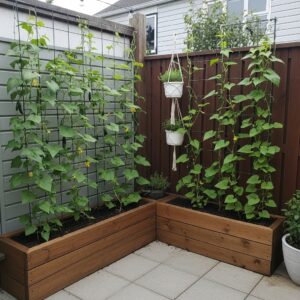
If you’re short on space, think upwards! Vertical gardening uses trellises, arches, or wall planters to grow vegetables vertically instead of horizontally.
-
Best for: Balconies, patios, or small backyards.
-
Pros: Saves ground space, reduces pests, and adds a decorative touch.
-
How to do it: Install trellises for cucumbers, tomatoes, and beans, or use wall-mounted planters for herbs and leafy greens.
💡 Tip: Combine vertical gardening with raised beds for a layered, space-saving garden design.
5. Companion Planting Garden Layout
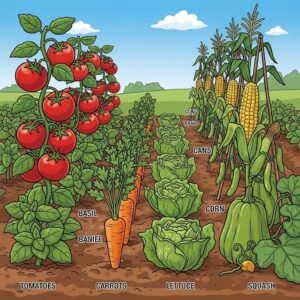
This method arranges vegetables based on their natural ability to support each other. For example, basil helps repel pests from tomatoes, while carrots loosen the soil for lettuce.
-
Best for: Gardeners who want healthier plants without chemicals.
-
Pros: Natural pest control, improved soil health, and better harvests.
-
How to do it: Group plants based on compatibility—like the classic “Three Sisters” (corn, beans, and squash). Use a garden planner to map which vegetables thrive together.
💡 Tip: Avoid planting heavy feeders (like broccoli and cabbage) side by side, since they compete for nutrients.
6. Container Vegetable Garden Layout
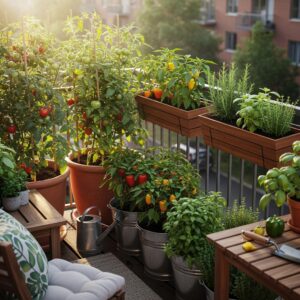
Don’t have a yard? No problem. Container gardening allows you to grow vegetables in pots, buckets, or raised planters.
-
Best for: Apartment dwellers or renters.
-
Pros: Portable, flexible, and easy to control soil and water.
-
How to do it: Use large containers with drainage holes. Plant deep-rooted vegetables like tomatoes in buckets, and grow herbs or peppers in medium-sized pots.
💡 Tip: Group containers together to create a mini “garden room” on your balcony or patio.
7. Herb & Vegetable Border Layout
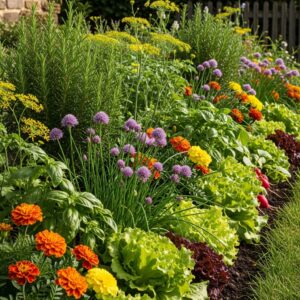
If you want a garden that looks decorative as well as functional, try blending vegetables with herbs and flowers in a border-style layout.
-
Best for: Cottage gardens or decorative landscapes.
-
Pros: Beautiful design, attracts pollinators, and deters pests.
-
How to do it: Plant herbs like rosemary and chives along the edges, surround them with colorful flowers like marigolds, and fill the center with leafy greens and root veggies.
💡 Tip: Flowers like marigolds and nasturtiums double as natural pest repellents.
8. Kitchen Garden (Potager) Layout
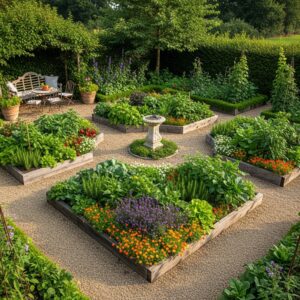
A potager combines practicality with style, blending vegetables, herbs, and flowers in artistic patterns.
Think of it as a “gourmet kitchen garden.”
-
Best for: Gardeners who love cooking and entertaining.
-
Pros: Provides fresh ingredients, looks stunning, and makes gardening feel luxurious.
-
How to do it: Create symmetrical beds with paths in between. Mix vegetables with herbs and edible flowers for a colorful, productive design.
💡 Tip: Add a small seating area nearby so you can enjoy the view while sipping coffee.
Want to take it a step further? Read DIY Fall Home Decor Projects Anyone Can Try
Final Thoughts
When it comes to garden layout ideas for vegetables, there’s no one-size-fits-all. The best design depends on your space, soil, and lifestyle.
Whether you go for the efficiency of square foot gardening, the charm of a potager, or the practicality of raised beds, each layout can be tailored to your needs.
Start small, experiment with different ideas, and don’t forget to enjoy the process—because the real joy of gardening is not just the harvest, but the journey. 🌱🥕🍅
